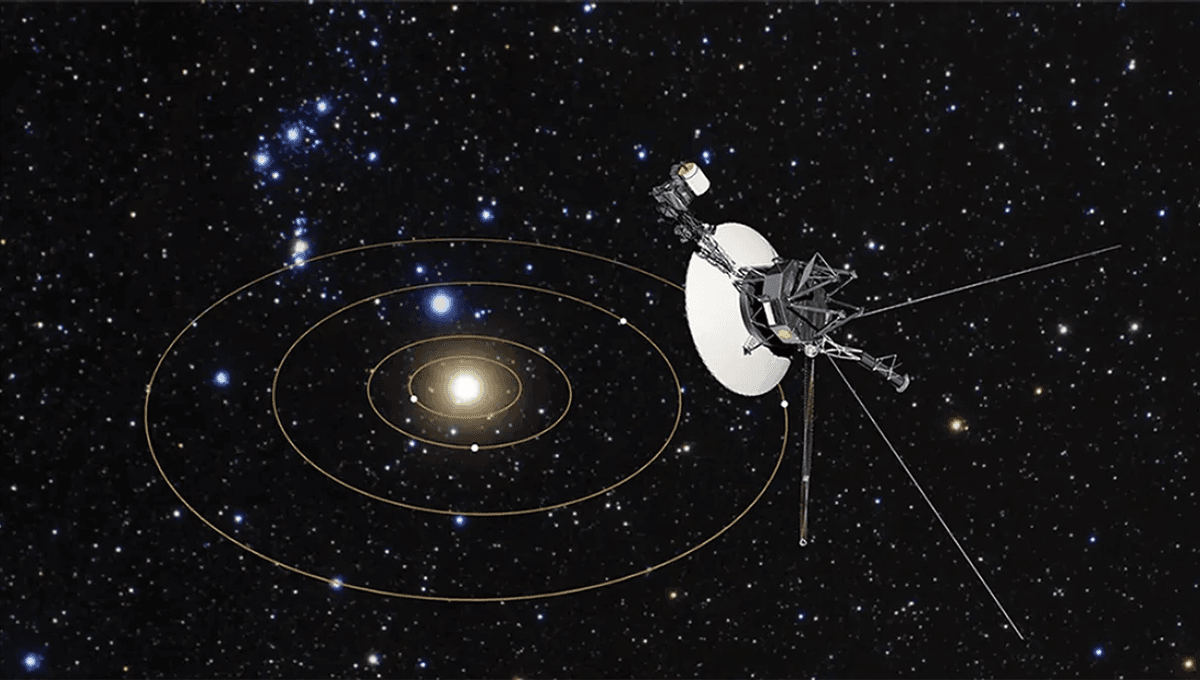
After a bumpy few years, we have good news about NASA’s Voyager 1 mission to share. NASA has successfully switched thrusters on the aging spacecraft from an impressive 24,630,000,000 kilometers (15,310,000,000 miles) away.
Voyager 1 has traveled further than any human-made object, crossing the heliopause and heading into interstellar space. While doing this, it has continued to send back useful data to Earth, helping us learn about the space between stars outside of our own Solar System. All this while working with just 69.63 kilobytes of memory, and running partly on code written in the archaic computer language Fortran 5.
“The button you press to open the door of your car, that has more compute power than the Voyager spacecrafts do,” Voyager project manager Suzanne Dodd explained to NPR. “It’s remarkable that they keep flying, and that they’ve flown for 46-plus years.”
In recent years, the spacecraft has begun to show signs of its age. For a time, it began sending back repeating patterns of 1s and 0s, rather than any useful science data. This problem – which turned out to be the result of corrupted memory – has thankfully been fixed with commands sent to the spacecraft. However, Voyager’s problems are not over.
An issue with the probe’s thrusters, which keep the probe pointed at Earth to receive such commands and send back useful data, was found by NASA.
“After 47 years, a fuel tube inside the thrusters has become clogged with silicon dioxide, a byproduct that appears with age from a rubber diaphragm in the spacecraft’s fuel tank,” NASA explained in a statement. “The clogging reduces how efficiently the thrusters can generate force.”
When operational, the liquid hydrazine thruster should release tiny, extremely short puffs of gas in order to adjust the spacecraft and point it towards Earth, needing to do this about 40 times a day.
The spacecraft is actually equipped with three sets of thrusters, two for propulsion and one for trajectory correction. In 2002, the first propulsion thruster began to show signs of clogging and NASA switched to using the other, but this too began to show signs of clogging in 2018. Out on the edges of the Solar System and no longer performing any maneuvers, NASA switched to the trajectory correction thruster. However, that thruster is now even more clogged than the previous two, and NASA has spent months planning a switch back to one of the less-clogged thrusters.
This is a lot more complicated than you’d think, and you probably already think switching thrusters on a spacecraft further than any other human-made object has ever traveled is quite complicated to start with.
In order to conserve power while still keeping science instruments running, NASA shut down several instruments as well as several heaters. Turning on a thruster when it has been cold for so long could result in it breaking, and so NASA had to warm them beforehand. With power in short supply (the plutonium-powered system that powers the craft is running out), the team had to shut down one of the main heaters of the spacecraft in order to turn on the thruster heater.
On August 27, they did this for an hour, before firing up the thruster once more. While successful, and Voyager continues to be able to point towards Earth, the mission will come to an end in the coming years as the power supply dwindles further, leaving Voyager 1 floating aimlessly in interstellar space.
Source Link: NASA Switches Thrusters On Voyager From 24,630,000,000 Kilometers Away